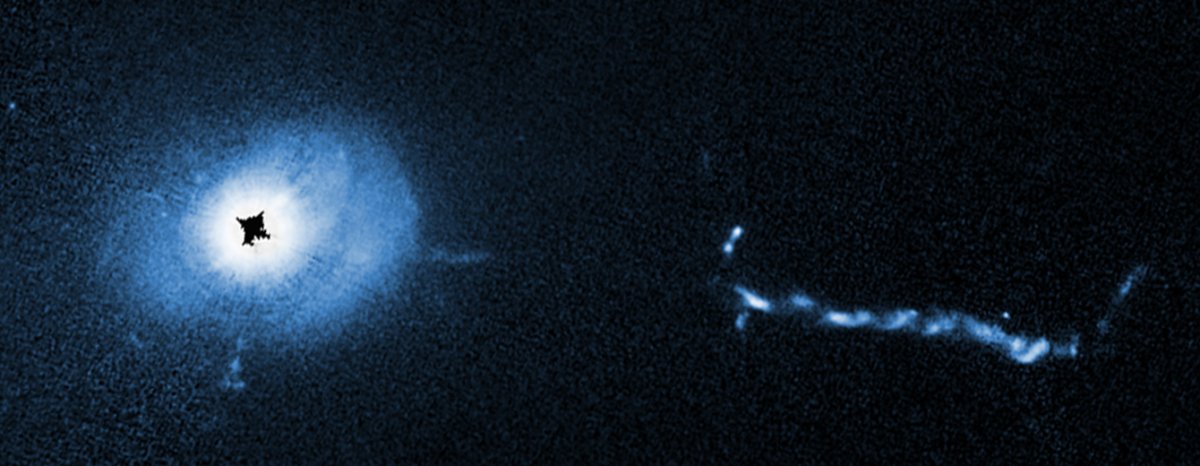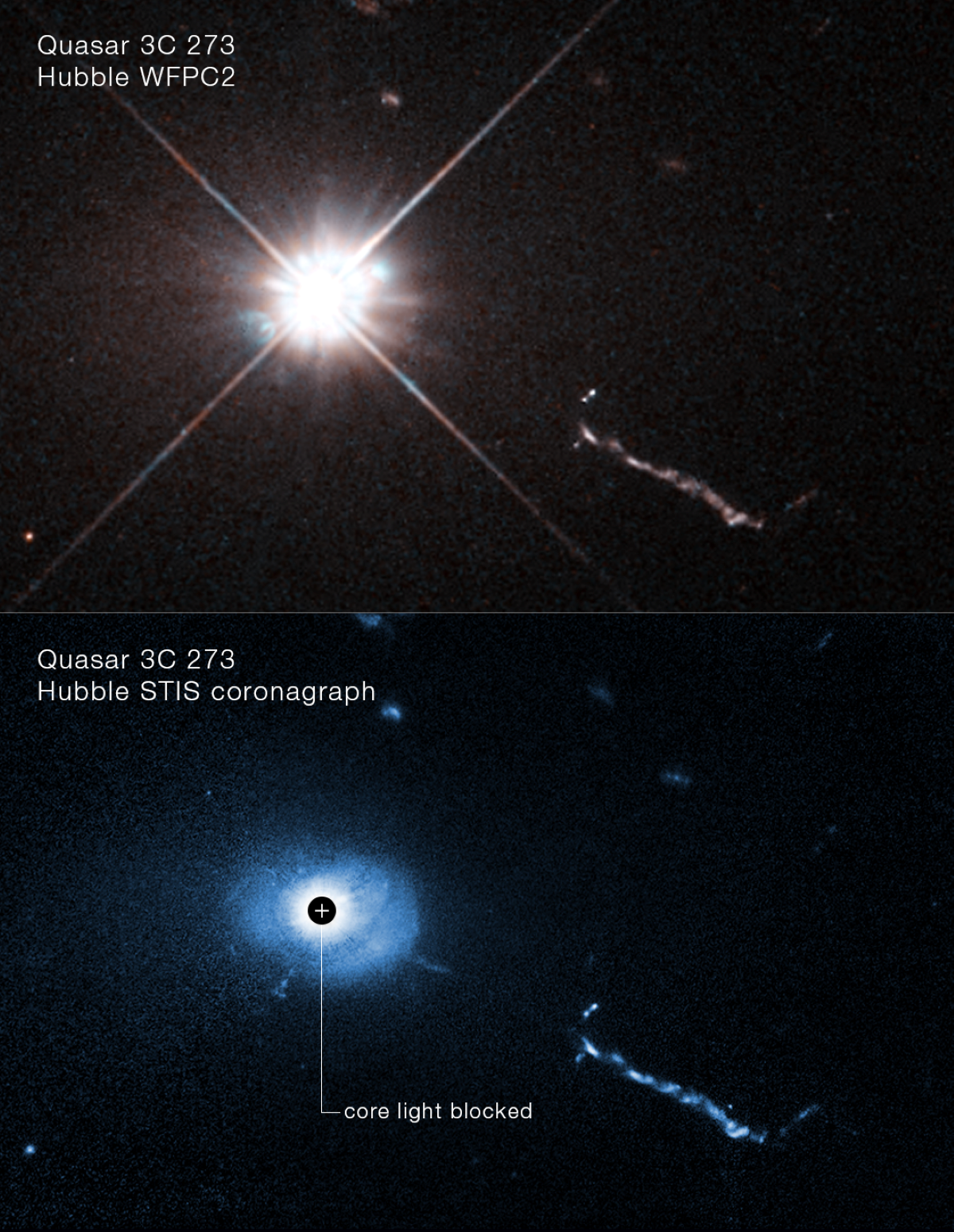NASA's Hubble Space Telescope has unveiled the closest-ever look at a monster black hole devouring its cosmic surroundings.
This supermassive black hole, at the heart of a quasar known as 3C 273, offers a unique view into the complex interplay of galactic forces billions of light-years away.
Quasars are luminous beacons powered by black holes consuming material at the centers of galaxies.
In a recent study, Hubble provided an up-close look at the environment around 3C 273, revealing an intricate tapestry of celestial phenomena.

A Hubble Space Telescope image of the core of quasar 3C 273. A coronagraph on Hubble blocks out the glare coming from the supermassive black hole at the heart of the quasar, allowing astronomers to...
NASA, ESA, Bin Ren Université Côte dâAzur/CNRS), John Bahcall IAS, Joseph DePasquale (STScI
Bin Ren of the Côte d'Azur Observatory and Université Côte d'Azur in Nice, France, and the lead author of the study, described lots of "weird things" that could be seen in the images.
"We've got a few blobs of different sizes and a mysterious L-shaped filamentary structure. This is all within 16,000 light-years of the black hole," he said in a statement.
According to the study, these enigmatic structures could include entire galaxies, known as satellite galaxies, which orbit the larger galaxy containing the black hole and feed the quasar's insatiable appetite.
"Thanks to Hubble's observing power, we're opening a new gateway into understanding quasars," Ren said. "My colleagues are excited because they've never seen this much detail before."
The first quasar ever identified, 3C 273, sits 2.5 billion light-years from Earth. It is located at the heart of a giant elliptical galaxy in the constellation of Virgo.
The quasar's luminosity outshines the brightest giant elliptical galaxies by over tenfold. In other words, this one object at the center of a galaxy is brighter than all the stars in 10 galaxies combined.
Astronomers believe that the likely fuel of such a ferocious fire must be matter falling, or "accreting," onto a supermassive black hole.
Previous observations from Hubble in 1994 hinted at the complexity of quasar environments, suggesting that galactic collisions and mergers play a key role in powering these celestial giants.

A comparison of Quasar 3C 273 with and without the coronograph. By blocking out the bright light from the quasar, astronomers can see weird filaments, lobes, and a mysterious L-shaped structure, probably caused by small...
NASA, ESA, Bin Ren Université Côte dâAzur/CNRS), John Bahcall IAS, Joseph DePasquale (STScI
However, the latest observations push the limits further. Using the Space Telescope Imaging Spectrograph (STIS) as a coronagraph, astronomers were able to block out the overwhelming light of the quasar, akin to observing the sun's atmosphere during a total lunar eclipse.
This technique allowed astronomers to peer eight times closer to the black hole than ever before.
The data also revealed details of a 300,000 light-year-long jet of material being expelled from the quasar at nearly the speed of light—approximately three times the width of our Milky Way galaxy, according to NASA.
By comparing archival Hubble data spanning 22 years, Ren's team observed that the jet appears to move faster as it extends further from the black hole.
"Hubble bridged a gap between the small-scale radio interferometry and large-scale optical imaging observations, and thus we can take an observational step towards a more complete understanding of quasar host morphology," Ren said.
"Our previous view was very limited, but Hubble is allowing us to understand the complicated quasar morphology and galactic interactions in detail."
As one of the closest quasars to Earth, 3C 273 continues to serve as a cosmic laboratory for unraveling the mysteries of galactic interactions and black hole physics.
While Hubble's contributions are transformative, Ren said that the James Webb Space Telescope's infrared capabilities will offer even more clues about the quasar's host galaxy and its environment.
Do you have a tip on a science story that Newsweek should be covering? Do you have a question about quasars? Let us know via science@newsweek.com.




